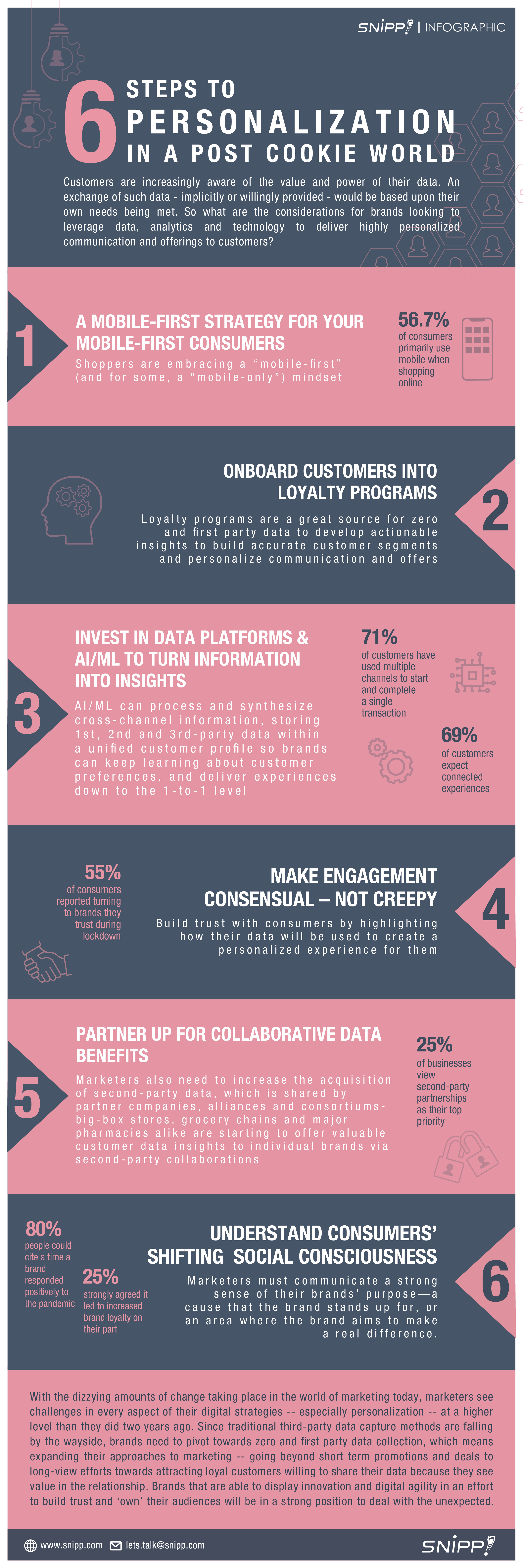Considerations for brands looking to leverage data, analytics and technology to deliver highly personalized communication and offerings to customers
Customers are increasingly aware of the value and power of their data. An exchange of such data - implicitly or willingly provided - would be based upon their own needs being met. So what are the considerations for brands looking to leverage data, analytics and technology to deliver highly personalized communication and offerings to customers
- A mobile-first strategy for your mobile-first consumers
Shoppers are embracing a “mobile-first” (and for some, a “mobile-only”) mindset
- 71% of consumers primarily use mobile when shopping online
- Onboard customers into loyalty programs
Loyalty programs are a great source for zero and first party data to develop actionable insights to build accurate customer segments and personalize communication and offers
- Invest in data platforms and AI/ML to turn information into insights
AI/ML (Artificial Intelligence / Machine Learning) can process and synthesize cross-channel information, storing 1st, 2nd and 3rd-party data within a unified customer profile so brands can keep learning about customer preferences, and deliver experiences down to the 1-to-1 level
- 71% of customers have used multiple channels to start and complete a single transaction
- 69% of customers expect connected experiences
- Make engagement consensual – not creepy
Build trust with consumers by highlighting how their data will be used to create a personalized experience for them
- 55% of consumers reported turning to brands they trust during lockdown
- Partner up for collaborative data benefits
Marketers also need to increase the acquisition of second-party data, which is shared by partner companies, alliances, and consortiums- big-box stores, grocery chains and major pharmacies alike are starting to offer valuable customer data insights to individual brands via second-party collaborations
- 25% of businesses view second-party partnerships as their top priority
- Understand consumers’ shifting social consciousness
Marketers must communicate a strong sense of their brands’ purpose—a cause that the brand stands up for, or an area where the brand aims to make a real difference.
- 80% people could cite a time a brand responded positively to the pandemic
- 25% strongly agreed it led to increased brand loyalty on their part
With the dizzying amounts of change taking place in the world of marketing today, marketers see challenges in every aspect of their digital strategies -- especially personalization -- at a higher level than they did two years ago. Since traditional third-party data capture methods are falling by the wayside, brands need to pivot towards zero and first party data collection, which means expanding their approaches to marketing -- going beyond short term promotions and deals to long-view efforts towards attracting loyal customers willing to share their data because they see value in the relationship. Brands that are able to display innovation and digital agility in an effort to build trust and ‘own’ their audiences will be in a strong position to deal with the unexpected.





